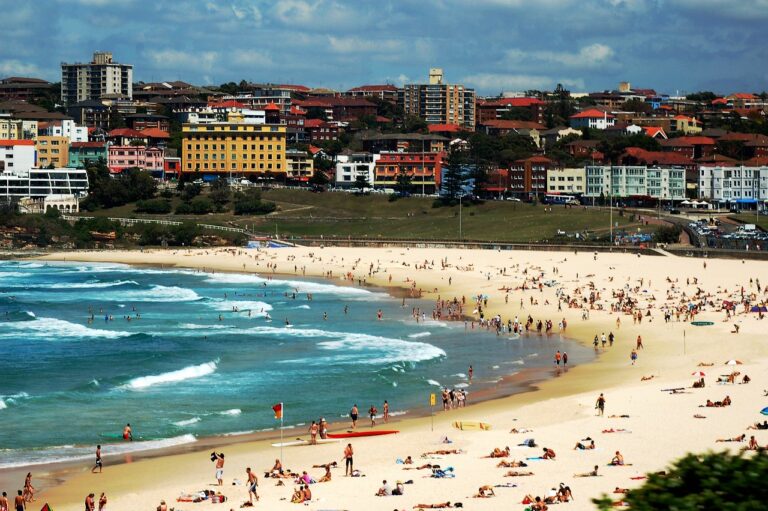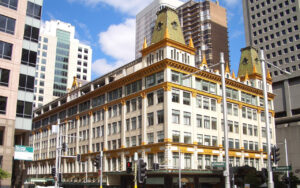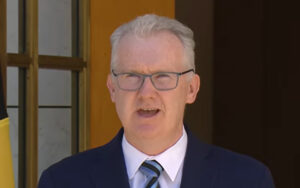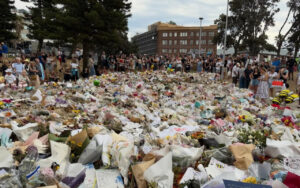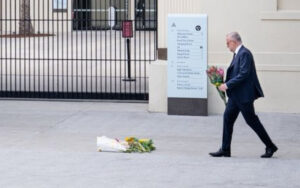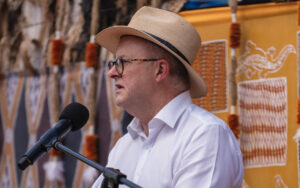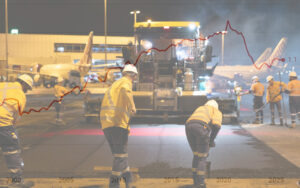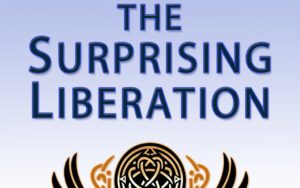White Australians, or simply Australians, have suffered immensely in the past several decades as their nation, like every other White nation, has been subsumed into the neoliberal order and the political institutions and culture that rule the modern West.
Neoliberalism began to creep in as the post-war consensus broke down across the West, left-wing parties such as Australian Labor gave up the fight for Australian workers, and the Harold Holt government (a ‘right-wing’ government) began dismantling the White Australia Policy which had for more than 70 years ensured that Australia retained its distinct demographic and cultural composition.
The creep of Washington D.C.’s institutions slowly took over Australian policymaking and the Hollywood machine overtook Australia’s media landscape. Today the nation that was once a proud racially conscious member of the British Empire is undergoing a demographic transition which will, if unchecked, result in the Australian population becoming a minority in the country it founded.
The White Australia Policy:
Even before the Federation of the Australian colonies and the formal creation of the White Australia policy the colonial governments were passing restrictions based upon the race and origin of immigrants. The colonial gold rush had brought tens of thousands of Chinese immigrants to Australia and the resulting social tension pressed premiers in colonial administrations to enact a series of laws to restrict all non-White immigration either explicitly or with the use of language-based testing.
Interestingly, though, the Chinese already present in pre-federation Australia were allowed to remain and retain the same political rights White Australians enjoyed. This is largely because the overwhelming majority of the Chinese population at the time was male and began to shrink as the population aged or eventually returned to China.
Upon federation the Barton government, Australia’s first, passed a series of bills which utilized language tests and customs officer’s discretion, among other procedures, to ensure that mass immigration from outside the West could not occur. Barton’s administration did this, in part, because it was supported by the Australian Labour movement and the movement favoured explicit race-based immigration and naturalization laws.
Other legislation, such as the Postal and Telegraph Services Act 1901 required that any vessel carrying mail to Australia (which included virtually all vessels of that age) had to have an entirely White crew. This largely prevented non-Whites from boarding vessels bound for Australia.
The Pacific Island Labourers Act of 1901 saw the removal of Kanakas and other Pacific Islander laborers in the country and eventually banned these groups from entering Australia.
All of these pieces of legislation and the executive action taken by the Australian state were designed to ensure that the Australian nation retained its “British character” and way of life.
The policy continued to be one of bipartisan consensus as well, with Labor Prime Minister John Curtin saying at the outbreak of the Second World War:
“This country shall remain forever the home of the descendants of those people who came here in peace in order to establish in the South Seas an outpost of the British race”
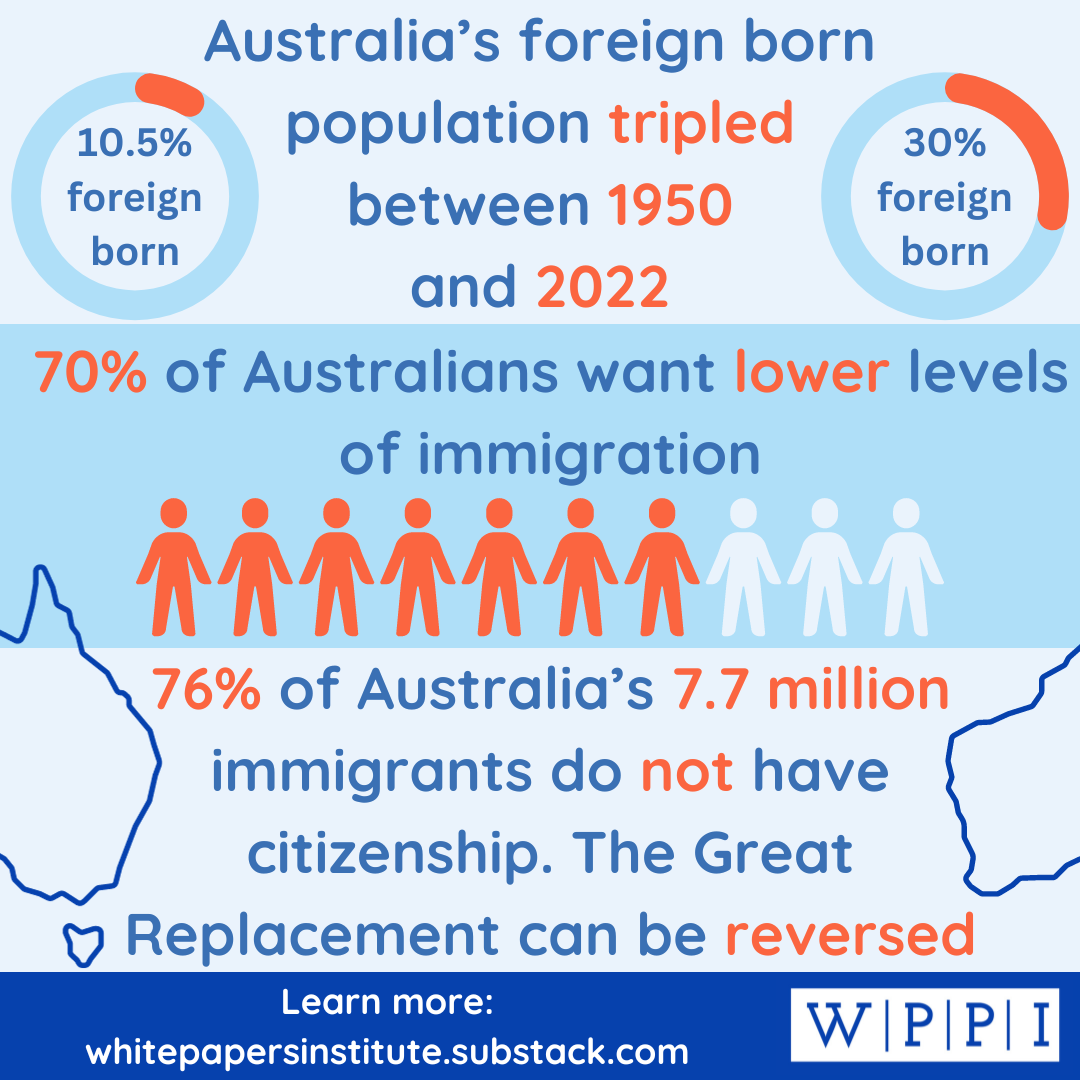
The current situation:
Due to the adept policymaking by pre and post-federation Australian governments the country’s population was supermajority White for decades post-federation.
By 1951 just 10.5% of the Australian population was born abroad according to the Australian Bureau of Statistics. This number roughly doubled to 20% by the year 1970, by which time the White Australia policy had largely been done away with. The Menzies government abolished the tests and customs officer discretion for admitting immigrants in 1958.
The immigrants who arrived in the intervening 19 years between 1951 and 1970 were, however, overwhelmingly White and from Eastern and Western Europe. The White Australia policy had retained the racial character of Australia, even if the ethnic character became more mixed.
The Australian nation has since experienced a continued decline in its share of the overall population of Australia, and the White population as a whole is now in precipitous retreat against a near-constant inflow of non-White immigrants.
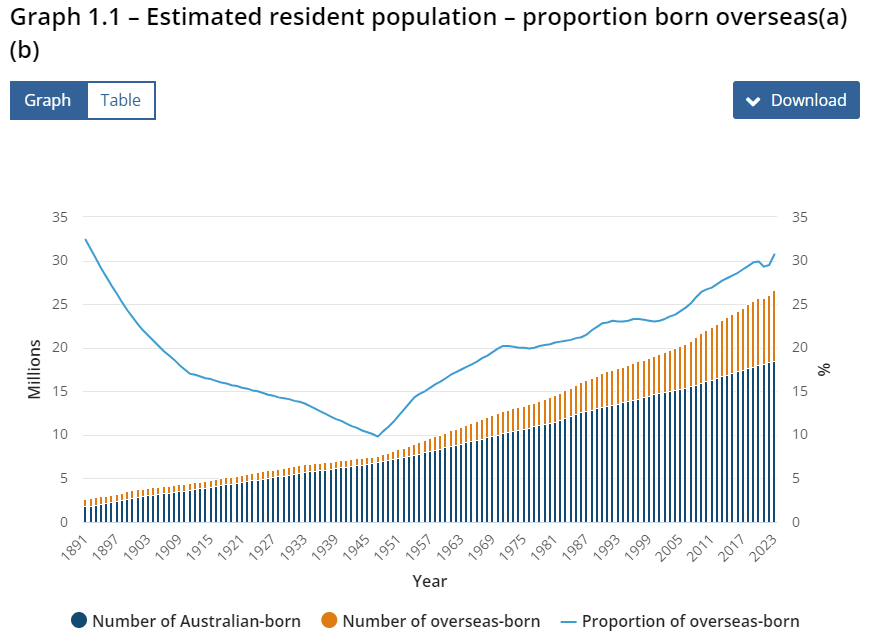
A series of 2023 figures provided by the Australian Bureau of Statistics reveals that the foreign-born population of Australia now exceeds 30.7%. The share of foreign-born persons has last exceeded 30% in 1894.
Today some 8.18 million foreign-born persons reside in Australia, a figure which has increased by 600,000 in just 3 years.
Between 2013 and 2023 some 467,000 Indians relocated to Australia resulting in in a doubling of the Indian share of the Australian population from 1.6% of the overall populace to some 3.2% today. More than 144,000 Nepalese relocated to Australia between 2013 and 2023, as well as over 223,000 Chinese and more than 143,000 Filipinos.
In total, some 26% of the Australian population appears to be non-White according to the data provided by the 2021 census, though this is likely a slight underestimate. Regardless, this is a significant increase from the mere 0.6% share the non-White population of Australia held in 1966, the last year that Australia explicitly collected racial data.
These mass movements of people have put incredible strain on the Australian nation. Australia is experiencing a massive housing shortage and housing cost crisis. Prices jumped 22% in 2021-2022 and 90% of would be first-time home buyers are unable to afford a property.
Likewise, real wages in Australia have not grown in any significant form since the mid-1970s and in much of the period between then and 2022 Australian wages have suffered years of marked decline or near-zero growth.
Mass migration is pricing White Australians out of their homes and reducing their quality of life in increasingly measurable ways. It is no wonder that some 40% of Australians between ages 19 and 29 are thinking about making a move abroad, with roughly 50% of respondents mentioning quality of life as their primary driver for looking abroad. The cost of living was part of the motivating factor for 45% of people and the cost of housing was a factor for a further 36%.
Australian feelings about immigration:
Australians are becoming increasingly weary of the multicultural experiment which is costing them their nation. Data from the Lowy Institute shows that some 71% of Australians believe their cities are too crowded, 47% believe immigrants are a burden (up from 40% in 2016), and the proportion of Australians who believe that immigrants “make Australia stronger” has collapsed 10 points from 2016 to 2017.
Another Lowy Institute poll conducted in 2024 shows that 48% of Australians believe that immigration to the country is too high while only 10% of Australians want to see it increased and 40% believe it is “about right”.
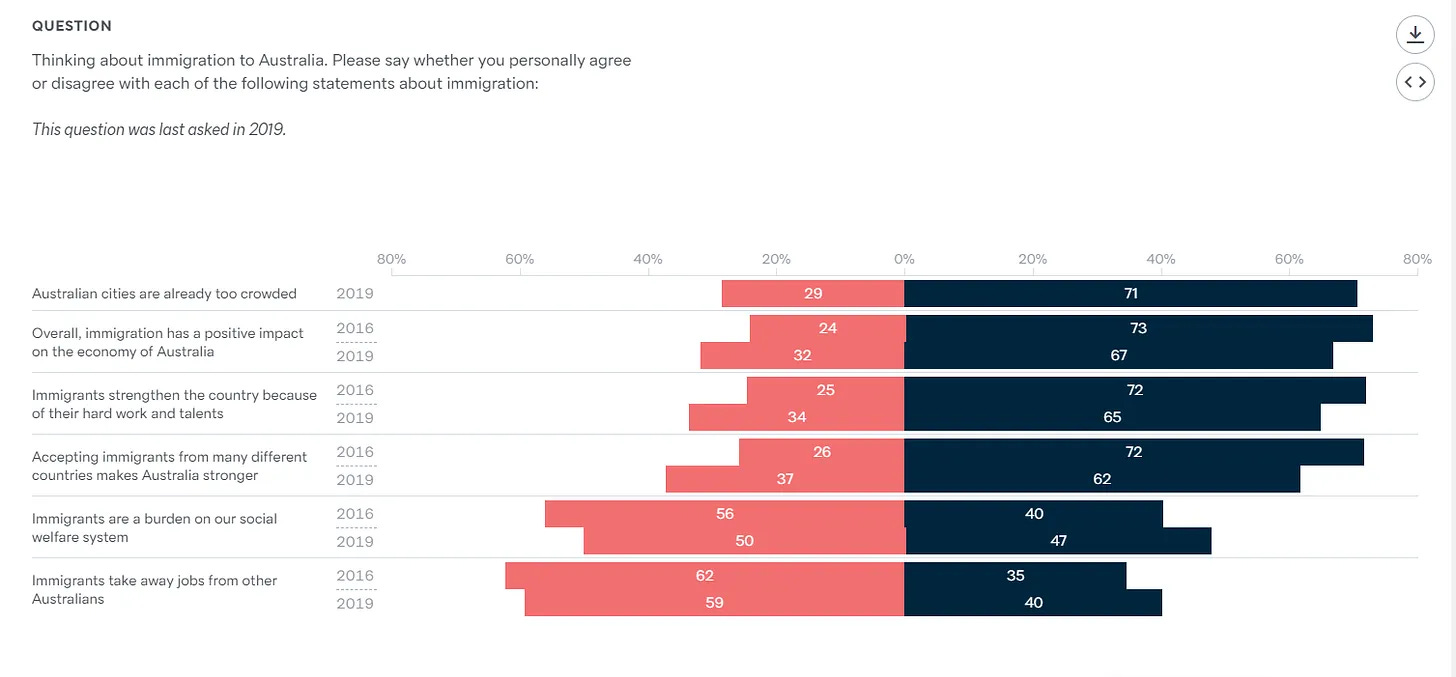
Additional data from the Australian Population Research Institute (TAPRI), gathered in 2022, shows that some 70% of Australians want lower levels of immigration and 61% of Australians believe that Australia “has enough diversity” and needs to focus on encouraging Australian identity.
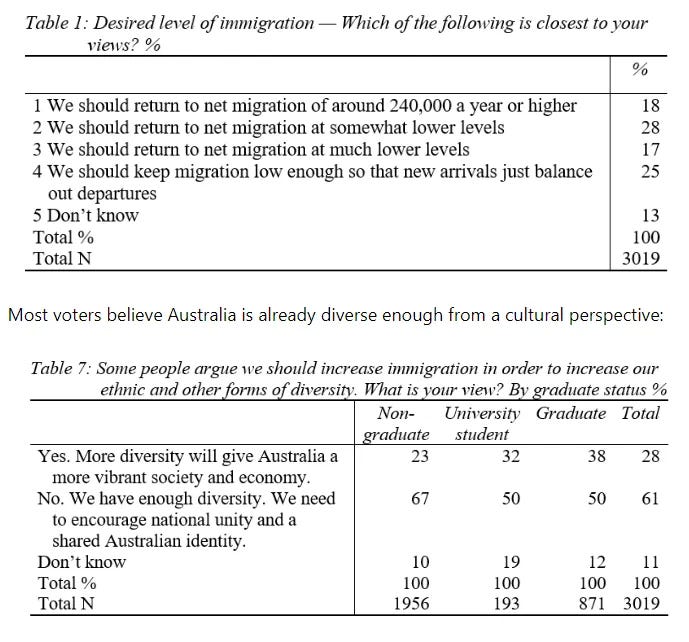
Policies to reverse the Great Replacement in Australia:
The first and most effective step Australia must take is to cancel the visas of the millions of non-citizens who reside in the country. Only some 2 million of the 8.2 million foreign-born persons in Australia have thus far been naturalized as Australian citizens (1) (2).
The vast bulk of these visa-holders will be non-Whites who have arrived in Australia in the post-1990 period. Most British immigrants have been naturalized and the New Zealanders have a unique right to reside in Australia.
In total, some 5.5 million non-Whites do not hold Australian citizenship, and second-generation non-Whites in Australia are an exceedingly small demographic. Fewer than 100,000 Indians in Australia were born in the country to immigrant parents. Numbers are higher for Australian-born-Chinese however. Some 560,000 Chinese have been born in the country. While for other non-White ethnic groups, the second-generation populations are still negligible.
Still, using the census data to assume that Whites in Australia currently constitute 19 to 20 million individuals, the deportation of Australia’s massive non-citizen population could propel White Australians back to an 88% to 92% share of the national population.
A start if ever there was one!
This article originally appeared on White Papers, and is published by The Noticer with permission. Follow the White Papers Policy Institute on Telegram here.
